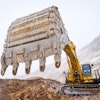
In today’s world, companies are often working with a smaller and smaller staff or team. Due to advancement in communications and automation, the company manages to perform task which just a few years ago, took a larger operation. As a company looks forward, this trend may continue.
Which can also lead to various unintentional consequences. It takes years to put together the right skill sets to provide success in this everchanging environment. How do you approach staff challenges when the chemistry within the group changes? How do you handle the good employee who has started to underperform? How do you work with someone who has not yet become a genuine problem, but may? These questions are asked every day in numerous companies around the country. Add into the equation a climate of smaller and smaller recruitment pools, what are your options?
Do you:
- Recruit new talent for the job in question
- Promote from within (causing a void)
- Go to the outside and take a chance
- Slide the person in question to a lateral position, more advantageous to their skills
- Deal with the disruption in a new department
I would like to suggest a third way. A way that is used every day in other industries but may be looked upon as innovative in ours. Over 50 percent of all fortune 500 companies rely on coaches and mentors. In addition, many government agencies such as NASA or department of State use this method of management improvement.
A proven way in which the company can maintain the team synergy, and actually add to the overall morale of the group. Let’s go over the similarities and differences in each of these activities.
The Management Coach
Is a proactive effort to make corrections in the current glide path of the employee in question. The coach is assigned to review, assess and develop a way forward for the underperforming employee. A Coach will work to provide a set of skills to allow the employee to go from point A to point B. To evaluate current benefits in the employee and to build on them. Such things as:
- Organizational skills
- Communication skills
- Problem solving
Most often the employee in question is just stuck. They know where they want to go, but for whatever reason cannot connect the dots to get there. By doing their homework, and taking the time to gain trust, a coach can start to ask the right questions and clarify the challenges at hand. Offering a new perspective, based on experience. To work one on one with the employee in a confidential setting, and with an unbiased perspective.
The Coach has the ability to work outside the normal limits of the company. They are not affected by office politics, or the pressure felt by going to one’s supervisor with a managerial problem.
Normally a management coach is assigned to an employee in question. A supervisor may start to notice an issue, even before the employee will. The assessment of the downward path must be countered with the long-term history of the employee. Upon review, the supervisor may choose to bring in a coach for a defined period of time, or to have the coach work on a certain habit or trait.
Prior to meeting with the employee, the coach will review the work history, and meet with the supervisor to better understand the situation. When appropriate, the coach will be introduced to the employee. At this meeting, the boundaries or scope of the coaching will be defined. The employee in question will be reassured that the action taken to bring in a coach is not punitive or long-term.
During a coaching session, the coach will establish a casual conversation centering around the demands of the job. He will get a feel for what it is that the employee sees as their responsibility. Try to carve out what the employee perceives as his job description. Once established, the coach can then move on to the task at hand.
The coach is always working towards the issue. Getting from point A to point B. Working to get the employee to look for new and different possibilities. Directing the conversation to options that the employee has not yet imagined. Reflect on their own performance, and what they would do different.
The coach is constantly supporting and encouraging the employee to find solutions for themselves. By knowing, the direction the company is looking to go, the coach is prodding the employee along.
Based on an allotted amount of time working with the employee, the coach will issue a report of the progress. This is not a report card or in any way a mark against the employee. It will only serve as a guidepost of the employee’s growth.
The Management Mentor
The mentor is a longer-term means of training. A mentor is either assign to a new or less experienced employee, or a mentor can be requested by an employee to fill in the gaps of his personal qualification. An example of the latter would be if a plant crew member was promoted to management. Although very qualified in the operation, may need assistance in the transition to their new role. Too many times the person promoted, or a new hire brought in from the outside are dropped into place without a clear understanding of what is required. This is often cause by the demanding workload of the direct supervisor or a “sink or swim” culture of the company.
The dynamics of the mentor and mentee is different from that of a coach in that there is a more interactive relationship. To put it a different way, the coach is like what you may expect from a sport coach or teacher. A mentor is like having a very wise Uncle.
At first glance, the coach and the mentor seem to perform the same task. But upon a closer look, the two perform much different missions. With the role of the coach outlined above, let’s look at what is the expectations of using a mentor.
A mentor:
- Focuses on personal growth, and, development of long-range managerial skills
- Develop the employee to a point that they can make better decisions on their own.
- The measurement of improvement is not solely based on a short-term goal or achievement
In my view the objective of the mentor is not so much to focus on a single task, or non-productive habit, it is to take a step back and work to improve long-term skill sets. The interactive component of the association allows for the mentee an ability to reach out on an issue that may not have come up in previous sessions.
Unlike a coach, a mentor would provide periodic updates to supervisors of the mentee. Again, these are not a report card in the historical sense, but guidepost to improvement. The formal association may have a sunset, but the relationship may carry on.
Encourage Growth Through Change
First and foremost, the use of a coach or a mentor should never be looked upon as a negative. It should be looked at as no different than you would, a technical expert to improve the operations of the plant. The goal in both cases is the overall enhancement to the company.
A coach or a mentor can come from within the company, however that route comes with some apparent downside. Working from within may cause the employee in question added stress, in the fact they may not be as open as they otherwise may be. In addition, based on real world workloads of a potential in-house coach or mentor the focus for success is hard to predict.
In the view of many, an outside qualified coach or mentor is a better option. An outside professional, with a set time frame and plan of execution will allow for the best possible outcome. An outside person with only one goal for improvement and no internal politics is often the best.
If you have additional questions, or like to know more, please feel free to contact me at any time: [email protected]
Ken Monlux is a consultant, who specialized in operational management issues. With over 30 years’ experience in hot mix plant operations, ready mix concrete operations and environmental clean-up and permitting. Ken can be reached at [email protected]



















